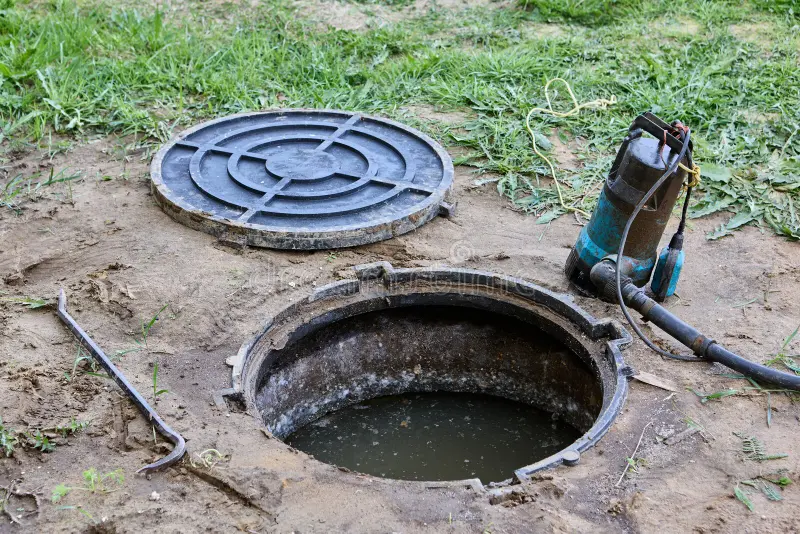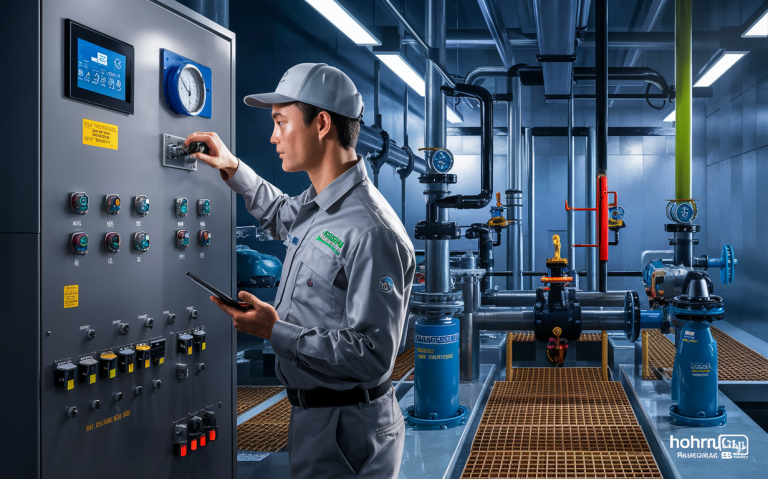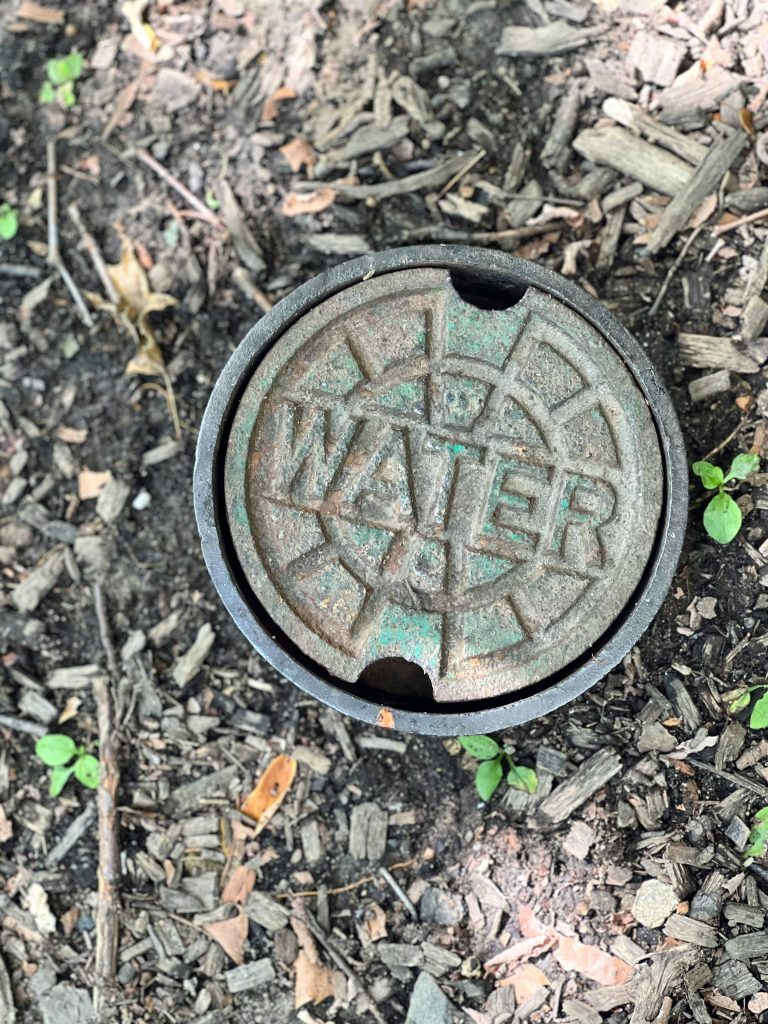Essential Components of a Jet Septic System Explained
Discover the components of a jet septic system and how they work together for efficient wastewater treatment.
A jet septic system consists of several key components that work together to effectively treat and dispose of household wastewater. These systems are designed to handle higher volumes of wastewater and provide more thorough treatment than traditional septic systems, making them ideal for larger homes or properties with challenging soil conditions.
Table of Contents
Key Takeaways
- Jet septic systems use aerobic bacteria to break down waste more efficiently than traditional septic systems
- The main components include a pretreatment tank, aeration chamber, settling chamber, and pump chamber
- An aerator or air pump is crucial for introducing oxygen into the system
- Control panels manage the system’s operations and alert homeowners to potential issues
- Regular maintenance and inspections are essential for optimal performance and longevity
Understanding the Basics of Components of a Jet Septic System

Components of a jet septic system, also known as aerobic treatment units (ATUs), are advanced wastewater treatment systems that use oxygen to enhance the breakdown of organic matter. Unlike traditional septic systems that rely solely on anaerobic bacteria, jet systems introduce air into the treatment process, promoting the growth of aerobic bacteria that are more efficient at breaking down waste.
These systems are particularly useful in areas with high water tables, poor soil conditions, or where space is limited. Many homeowners in Middletown, New York, and the surrounding areas have found jet septic systems to be a reliable solution for their wastewater treatment needs.
The pretreatment tank: The first line of defense
The pretreatment tank is the initial component of a jet septic system. It functions similarly to a traditional septic tank, serving as the first stop for all wastewater leaving your home. This tank allows solid waste to settle at the bottom, forming a layer of sludge, while oils and grease float to the top, creating a scum layer.
The primary purpose of the pretreatment tank is to begin the breakdown process and prevent large solids from entering the subsequent treatment stages. This initial separation is crucial for the overall efficiency of the system and helps protect the downstream components from clogging or damage.
The Heart of the Components of a Jet Septic System
Following the pretreatment tank, wastewater flows into the aeration chamber. This is where the magic happens in a jet septic system. The aeration chamber is equipped with an aerator or air pump that introduces oxygen into the wastewater. This infusion of oxygen creates an ideal environment for aerobic bacteria to thrive.
Aerobic bacteria are much more efficient at breaking down organic matter compared to their anaerobic counterparts. As a result, the treatment process in the aeration chamber is faster and more thorough, leading to cleaner effluent that’s easier on the environment.
The settling chamber: Clarifying the effluent
After the aeration process, the wastewater moves into the settling chamber. This component allows any remaining solids to settle out of the treated water. The settling chamber acts as a final clarification step, ensuring that the effluent leaving the system is as clean as possible.
In many components of a jet septic system, the settling chamber is designed with baffles or other structures that help prevent the resuspension of settled solids. This design feature is crucial for maintaining the quality of the effluent and protecting the downstream components of the system.
The pump chamber: Distributing treated effluent
The final major component of components of a jet septic system is the pump chamber. This chamber houses a pump that’s responsible for distributing the treated effluent to the drain field or other approved disposal area. The pump ensures that the effluent is evenly distributed, which is essential for proper absorption and further natural treatment in the soil.
In some components of a jet septic system, the pump chamber may also include additional treatment features, such as UV disinfection or chemical treatment, to further improve the quality of the effluent before it’s released into the environment.
The brains of the operation: Control panels
While not physically part of the treatment process, control panels are a crucial component of jet septic systems. These panels manage the operation of the aerator, pumps, and other electrical components. They also monitor system performance and can alert homeowners to potential issues, such as power failures or equipment malfunctions.
Modern control panels often include advanced features like remote monitoring capabilities, allowing homeowners or service providers to check on the system’s status from a distance. This can be particularly helpful for properties in rural areas of Orange County or Sullivan County, where frequent on-site checks might be inconvenient.
Air pumps and aerators: Breathing life into the system
The air pump or aerator is the component that sets jet septic systems apart from traditional septic systems. These devices introduce oxygen into the aeration chamber, creating the aerobic environment necessary for efficient waste treatment.
There are several types of aerators used in components of a jet septic system, including:
- Linear air pumps
- Rotary vane air pumps
- Diaphragm air pumps
Each type has its advantages and is chosen based on factors such as system size, local regulations, and specific site conditions. For homeowners in Middletown and the surrounding areas, it’s important to work with a qualified septic professional to determine the most appropriate aerator for your system.
Filters: Enhancing effluent quality
Many components of a jet septic system incorporate filters at various stages of the treatment process. These filters help remove fine particles and improve the overall quality of the effluent. Common types of filters used in jet systems include:
Effluent filters
Installed at the outlet of the pretreatment tank, these filters prevent larger solids from entering the aeration chamber. They’re typically easy to clean and maintain, making them a popular choice for homeowners.
Recirculating sand filters
Some components of a jet septic system use recirculating sand filters as an additional treatment step. These filters provide excellent removal of suspended solids and can significantly improve effluent quality.
Membrane bioreactors
In highly sensitive areas or where extremely high-quality effluent is required, membrane bioreactors may be used. These advanced filtration systems can produce effluent that’s nearly drinking water quality.
Drain fields: The final frontier
While not technically part of the jet septic system itself, the drain field is an essential component of the overall wastewater treatment process. The drain field, also known as a leach field or absorption field, is where the treated effluent is released into the soil for final treatment and dispersal.
In jet septic systems, the drain field often benefits from the higher-quality effluent produced by the treatment process. This can result in longer-lasting drain fields and reduced risk of soil clogging or groundwater contamination.
Alarms and monitoring systems: Keeping you informed
Most jet septic systems are equipped with alarms and monitoring systems that alert homeowners to potential issues. These can include:
- High water alarms
- Aerator failure alarms
- Pump failure alarms
- Power failure indicators
These warning systems are crucial for preventing system failures and protecting the environment. They allow homeowners to address issues promptly, potentially avoiding costly repairs or environmental damage.
Risers and access ports: Facilitating maintenance
Proper maintenance is essential for the longevity and performance of jet septic systems. To make maintenance easier, most systems are equipped with risers and access ports that bring key components to or near ground level. This design feature allows for easier inspections, pumping, and repairs without the need for extensive digging.
For homeowners in Middletown and the surrounding areas, these access points make it easier for local septic service providers to perform routine maintenance and address any issues that may arise.
Comparing jet septic system components to traditional systems
To better understand the unique features of jet septic systems, let’s compare their components to those of traditional septic systems:
| Component | Jet Septic System | Traditional Septic System |
|---|---|---|
| Primary Treatment | Pretreatment tank | Septic tank |
| Secondary Treatment | Aeration chamber | None (relies on soil absorption) |
| Bacteria Type | Aerobic | Anaerobic |
| Effluent Quality | Higher | Lower |
| Pumps | Required for aeration and distribution | Optional (gravity systems possible) |
| Control Panel | Required | Not typically required |
| Maintenance Frequency | Higher | Lower |
The importance of proper sizing and installation
The effectiveness of a jet septic system relies heavily on proper sizing and installation. Factors that influence system sizing include:
- Number of bedrooms in the home
- Daily water usage
- Soil conditions
- Local regulations
In Middletown and the surrounding areas, it’s crucial to work with a licensed septic professional who is familiar with local codes and conditions. They can ensure that your jet septic system is properly sized and installed to meet your specific needs and comply with all relevant regulations.
Maintenance requirements for jet septic systems
While jet septic systems offer superior treatment, they do require more frequent maintenance than traditional septic systems. Regular maintenance tasks include:
- Checking and cleaning filters
- Inspecting and servicing the aerator
- Pumping the pretreatment tank
- Testing effluent quality
- Inspecting electrical components and control panels
Most manufacturers recommend annual inspections by a qualified professional. For homeowners in Orange County, Rockland County, and Sullivan County, it’s important to establish a regular maintenance schedule with a local septic service provider to ensure optimal system performance.
Environmental benefits of jet septic systems
Jet septic systems offer several environmental advantages over traditional septic systems. The higher quality effluent produced by these systems reduces the risk of groundwater contamination and helps protect local water resources. This is particularly important in areas with sensitive ecosystems or where water quality is a concern.
Additionally, the more efficient treatment process of jet systems can allow for smaller drain fields, which can be beneficial in areas with limited space or challenging soil conditions. This feature makes jet septic systems an attractive option for many homeowners in the Middletown area who are looking to minimize their environmental impact.
Troubleshooting common jet septic system issues
Even with regular maintenance, jet septic systems can occasionally experience problems. Some common issues include:
Aerator failures
The aerator is a critical component of the system, and its failure can significantly impact treatment efficiency. Signs of aerator problems include unusual noises, reduced bubbling in the aeration chamber, or alarm notifications from the control panel.
Pump malfunctions
Issues with the effluent pump can lead to improper distribution of treated wastewater. This can result in soggy areas in the drain field or backups into the home.
Control panel issues
Electrical problems or malfunctions in the control panel can disrupt system operation. Regular inspection of the control panel and prompt attention to any alarms can help prevent more serious issues.
Clogged filters
Over time, filters can become clogged with debris, reducing system efficiency. Regular cleaning and replacement of filters as needed can help maintain optimal performance.
The future of jet septic systems
As wastewater treatment technology continues to advance, we can expect to see further improvements in jet septic system design and efficiency. Some potential developments include:
- More energy-efficient aerators and pumps
- Advanced filtration technologies for even higher-quality effluent
- Smart control systems with remote monitoring and diagnostics
- Integration with home automation systems for improved management
For homeowners in Middletown and the surrounding areas, staying informed about these advancements can help you make the best decisions for your property’s wastewater treatment needs.
Choosing the right jet septic system for your property
Selecting the appropriate jet septic system for your home involves considering several factors:
- Property size and layout
- Soil conditions
- Local regulations and permit requirements
- Budget considerations
- Long-term maintenance needs
It’s essential to work with a reputable septic system provider who can assess your specific situation and recommend the most suitable system. In Middletown, New York, and the surrounding counties, several experienced professionals can guide you through the selection and installation process.
- Jet septic systems are an alternative to traditional septic systems and are commonly used in areas with difficult soil conditions or high water tables. Here are some components of a jet septic system:
- Dose Pump: A jet septic system uses a dosing pump to distribute the wastewater evenly into the drain field. The pump is typically powered by electricity and is programmed to dispense the wastewater at specific intervals.
The role of jet septic systems in modern wastewater treatment
Jet septic systems represent a significant advancement in on-site wastewater treatment technology. By understanding the various components and their functions, homeowners can better appreciate the benefits these systems offer and the importance of proper maintenance.
For residents of Middletown, New York, and the surrounding areas, jet septic systems provide an effective solution for wastewater treatment, particularly in challenging soil conditions or where environmental concerns are paramount.
With proper care and maintenance, a jet septic system can provide reliable, efficient, and environmentally friendly wastewater treatment for many years to come. For more information, you can visit our website or contact us.







